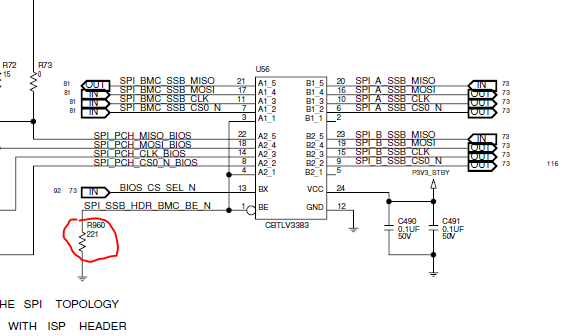Hi,
See the schematic excerpt below for reference.
Data corruption is occurring on the A1-B2 path when A1 is connected to B2 and A2 is connected to B1.
- Simple burst reads will yield bad bits, but on re-read correct can be recovered
- Issue manifests as fail to boot (cannot read BIOS) or fail to update (cannot correctly program BIOS)
- Device is being used to access flash
- There does not appear to be any temperature dependency (issue occurred at 25C).
- PCH and BMC are both masters and are both on "A" side
- BMC access is at 20MHz nominal and sometimes up to 25MHz
- PCH access is at 30MHz nominal and sometimes up to 40MHz
- Vil/Vih issues does not seem to be a possible reason for failure.
- two vendors of SPI flash is used, both are expected to have same Vih / Vil
Two experiments tested thus far:
- When stopping data transmission on the A2-B1 path, the problem goes away. This reliable stops the failure
- They will switch back to 221 ohm to see if the issue returns
- Note: There was a reported case where the "issue fixed itself" after they simply tried probing the lines


